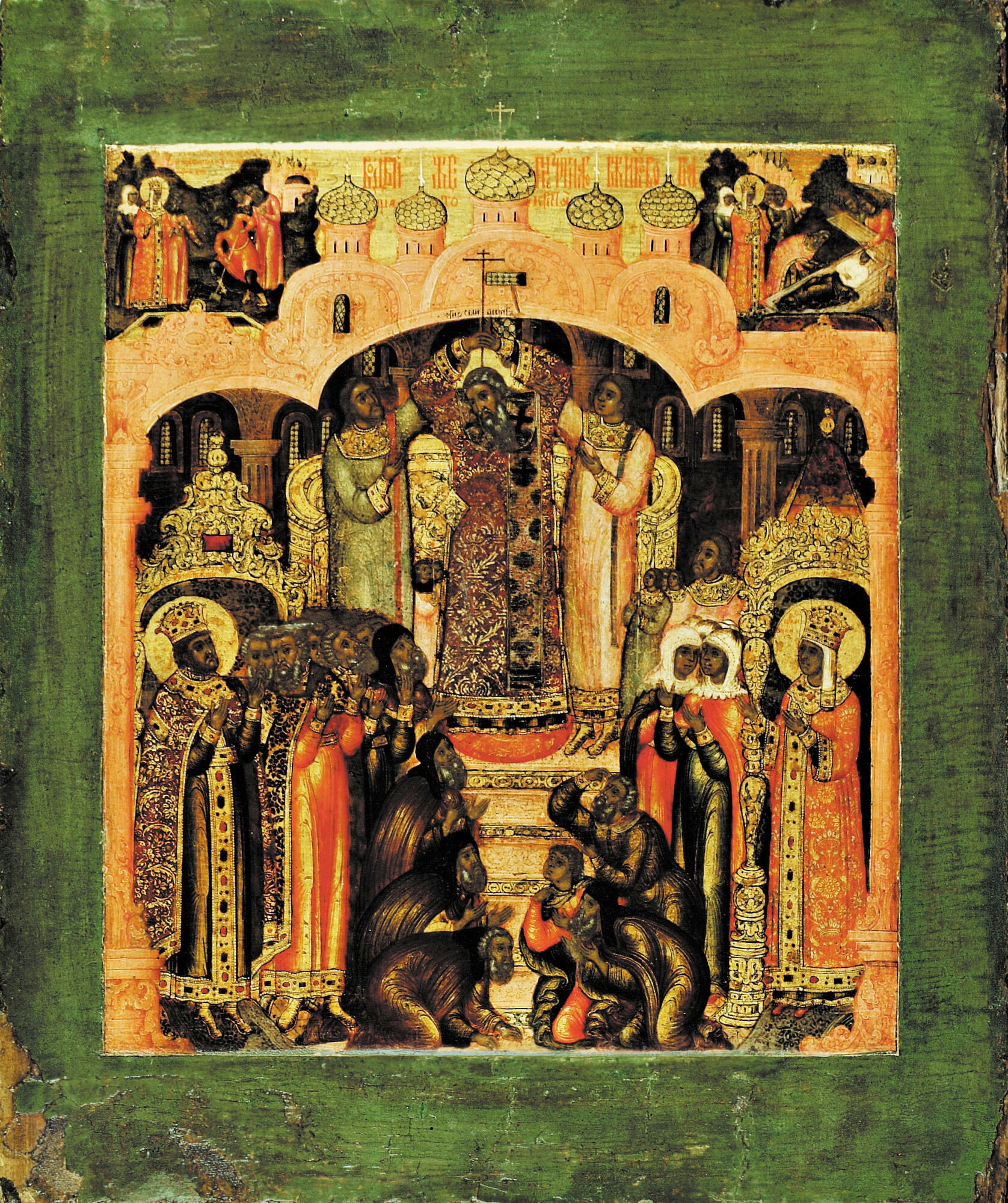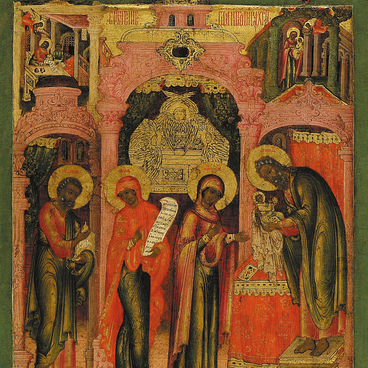The Feast of the Elevation of the Holy Cross and the iconography of this scene was based on the discovery of the Cross in 326.
The First Christian Emperor Constantine the Great strove to find and keep as many relics of the earthly life of Jesus, Mary, and saints as possible. During such searches, the Holy Sepulcher, or Christ’s tomb, was discovered. Three crosses and the titulus from Jesus’s Cross were also uncovered. The relics were identified by the fact that a dead young woman was resurrected at the touch of the cross. This is why the Cross is also known as Life-Giving.
The excavations were supervised by Helena, Constantine’s mother, and Macarius, Bishop of Jerusalem. This was when the Cross was raised for the first time at a higher level for all Christians to be able to visit it and bow to the Cross. A year later, having fulfilled her mission, the Empress died.
In total, the Empress organized the construction of over 80 churches in such areas as Bethlehem, Gethsemane, the Mount of Olives, and other historic sites. Emperor Constantine ordered to build the Church of the Resurrection in Jerusalem and place the Tomb of Jesus in the Church. On September 13, 335, the church was consecrated, and September 14 was determined as the Feast of the Elevation of the Holy Cross. This is mentioned in the Alexandrian World Chronicle before the 7th century.
In the first half of the 7th century, the patriarch, the Cross and other relics were captured by Khosrow II, king of Iran. Having defeated the enemy’s army, the Byzantine Emperor Heraclius wanted to return the Cross to the Church of the Holy Sepulcher. As legend has it, he was only able to do it after removing all the regalia from the Cross, as requested by an angel. The Cross was raised on a platform for the second time, for everyone to worship it.
The iconography of the scene is rather transparent. The Cross is placed in the center of the icon at a higher platform, with stairs leading to it. Initially, a small church cross was depicted, but in the 15th or 16th century it was replaced by the realistic image of the Cross of Jesus. Sometimes, it was shown decorated with branches. This is the version that is used nowadays.
In the early 10th-century version, the cross was only supported by a bishop, in later versions — by a bishop and other priests. Later, Empress Helena was added to the icon, and eventually — both the Empress and her son Emperor Constantine. This is the latest version that has both a symbolic and historical meaning. In the background, we can see a church, and in front, Christians who have gathered in front of the Cross.
Moscow icon painters sometimes added the Russian tsar and patriarch. This is how they emphasized the continuity between Rome, the Second Rome (Byzantium), and the Third Rome (Moscow). Often, the icon also featured the scenes of discovering the Cross and the resurrection of a dead woman.
This icon of the feasts tier was created by the brotherhood of icon painters under Gury Nikitin and was placed in the side altar of Barlaam of Khutyn at the Church of Elijah the Prophet.
The First Christian Emperor Constantine the Great strove to find and keep as many relics of the earthly life of Jesus, Mary, and saints as possible. During such searches, the Holy Sepulcher, or Christ’s tomb, was discovered. Three crosses and the titulus from Jesus’s Cross were also uncovered. The relics were identified by the fact that a dead young woman was resurrected at the touch of the cross. This is why the Cross is also known as Life-Giving.
The excavations were supervised by Helena, Constantine’s mother, and Macarius, Bishop of Jerusalem. This was when the Cross was raised for the first time at a higher level for all Christians to be able to visit it and bow to the Cross. A year later, having fulfilled her mission, the Empress died.
In total, the Empress organized the construction of over 80 churches in such areas as Bethlehem, Gethsemane, the Mount of Olives, and other historic sites. Emperor Constantine ordered to build the Church of the Resurrection in Jerusalem and place the Tomb of Jesus in the Church. On September 13, 335, the church was consecrated, and September 14 was determined as the Feast of the Elevation of the Holy Cross. This is mentioned in the Alexandrian World Chronicle before the 7th century.
In the first half of the 7th century, the patriarch, the Cross and other relics were captured by Khosrow II, king of Iran. Having defeated the enemy’s army, the Byzantine Emperor Heraclius wanted to return the Cross to the Church of the Holy Sepulcher. As legend has it, he was only able to do it after removing all the regalia from the Cross, as requested by an angel. The Cross was raised on a platform for the second time, for everyone to worship it.
The iconography of the scene is rather transparent. The Cross is placed in the center of the icon at a higher platform, with stairs leading to it. Initially, a small church cross was depicted, but in the 15th or 16th century it was replaced by the realistic image of the Cross of Jesus. Sometimes, it was shown decorated with branches. This is the version that is used nowadays.
In the early 10th-century version, the cross was only supported by a bishop, in later versions — by a bishop and other priests. Later, Empress Helena was added to the icon, and eventually — both the Empress and her son Emperor Constantine. This is the latest version that has both a symbolic and historical meaning. In the background, we can see a church, and in front, Christians who have gathered in front of the Cross.
Moscow icon painters sometimes added the Russian tsar and patriarch. This is how they emphasized the continuity between Rome, the Second Rome (Byzantium), and the Third Rome (Moscow). Often, the icon also featured the scenes of discovering the Cross and the resurrection of a dead woman.
This icon of the feasts tier was created by the brotherhood of icon painters under Gury Nikitin and was placed in the side altar of Barlaam of Khutyn at the Church of Elijah the Prophet.



